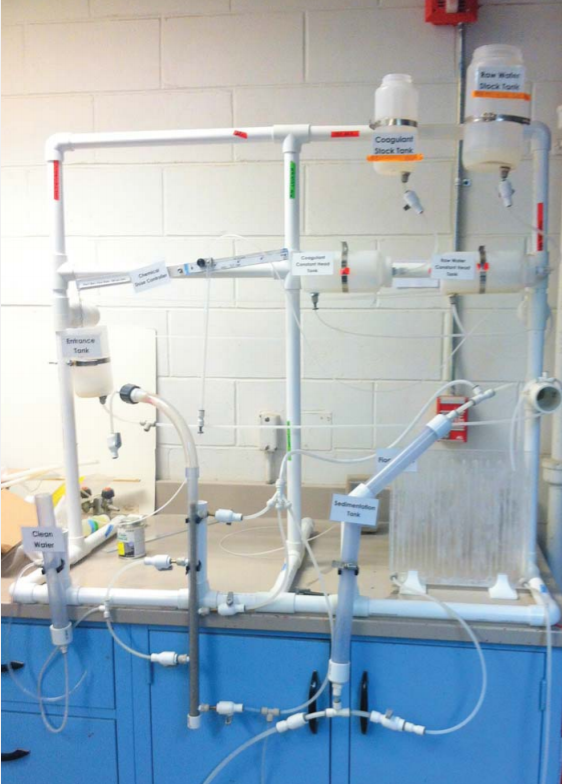Alice Reis, Erin Loughlin, Lauren Frazier
Abstract
The demo plant team is responsible for design, construction, and troubleshooting of the AguaClara Demo Plant. The successful operation of this plant is crucial in order to demonstrate the process of AguaClara plants to all stakeholders, including students, faculty, staff, community members, business partners, and potential sponsors. This spring semester, our research team focused on fixing issues with the current demo plant design, such as an unreliable flocculator and dose controller, unstable frame, and concerns with differences in hydraulic head. Our research includes conceptualizing and testing a more efficient and stable plant assembly and start-up for those unfamiliar with the technology; resolving issues with improper coagulant dosing and head loss differences; designing and implementing a new flocculator design; testing new fittings for the stacked rapid sand filter; and providing thorough documentation of the demo plan so that future teams would have less difficulty familiarizing themselves with the AguaClara demo plant. The redesigned demonstration plant is more stable with the addition of a middle bream and a contiguous bottom support. Overflow issues in the flocculator were addressed through the manufacture of a new flocculator, which contains an overflow weir and outlet. Inconsistencies with head loss were resolved by creating a Mathcad calculation file to determine the necessary lengths of a “long, straight” tubing from the constant head tanks. Increasing the capacity of the raw water stock tank from less than one liter to two liters allowed for an increase in continuous operation without interruption.



